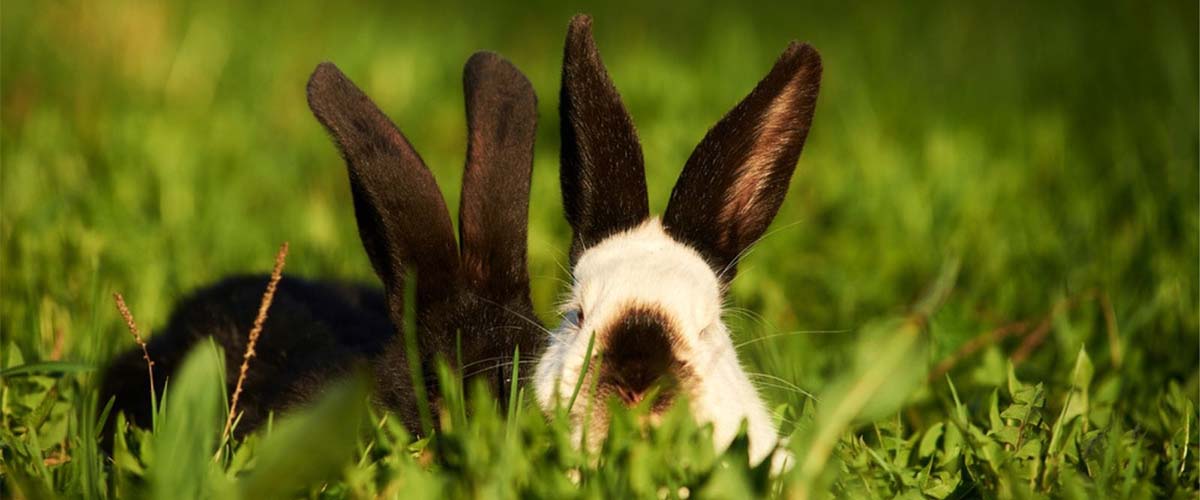Heatstroke in Rabbits
Overview
- Heatstroke is a very serious condition that progresses quickly, and in severe cases, can cause death.
- Rabbits are at high risk of heatstroke because they have dense fur, don’t pant or sweat, and therefore, have limited ways to lose heat.
- Wild rabbits regulate their temperature by staying in their burrows on warm days and only emerging when it’s cool. It’s essential to make sure your rabbits also have places to stay cool.
- If your rabbit shows signs of heatstroke, immediately start first aid, then contact your vet.
- The quicker your rabbit is cooled down, the better their chance of a full recovery.
First aid for heatstroke in rabbits
Act quickly but stay calm - the faster your rabbit cools down, the better their chance of recovery.
Step 1: Move your rabbit into the shade or a cool room
Step 2: Start cooling your rabbit down
- Use cold water (cold tap water is fine) to wet their ears, then start soaking their body (very slowly so as not to panic them).
- Be extremely careful they don’t inhale any water - keep it away from their nose and mouth.
- Offer them a drink of cold water, but don’t force them to drink if they don’t want to.
- Put them on top of a cold, wet towel.
- Create a breeze by opening doors and windows or turning a fan on.
- As long as they don’t panic, sit them on top of an ice pack or frozen veg wrapped in a towel (don’t force them if they don’t want to).
- Don’t cuddle them or cover them with a wet towel, this will make them even hotter.
Step 3: Go to your nearest vets
- Call your vet to let them know you’re coming
- Transport your rabbit in an air-conditioned car or a car with the windows open.
- Put them in a carrier with holes in it so they stay calm, can’t escape, but still benefit from the breeze.
- If possible, bring someone with you to keep wetting their ears and body while you travel.
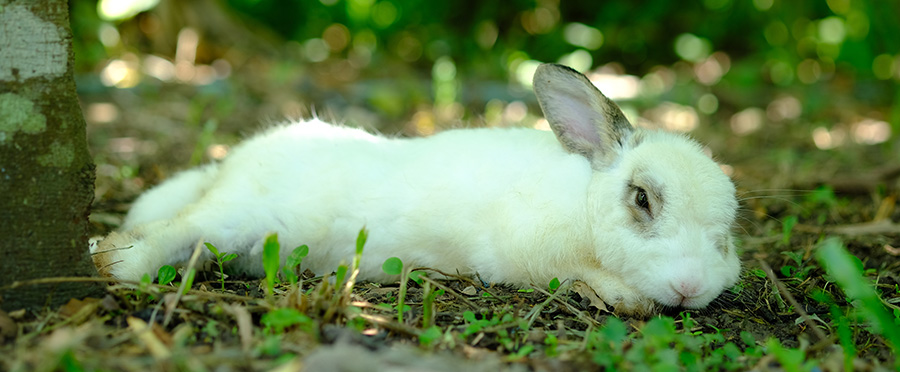
Heatstroke is an extremely dangerous condition that can develop if your rabbit’s body temperature gets above 40.5°C/104.9°F. It can cause seizures, organ damage, internal bleeding, unconsciousness, and even death. The longer a rabbit’s body temperature stays high, the more damage it causes, so the quicker they are cooled down and treated by a vet, the better their chance of a full recovery.
Any rabbit can develop heatstroke, but they are more at risk if they are pregnant, overweight, brachycephalic (flat-faced), very old, very young, poorly, or prone to stress.
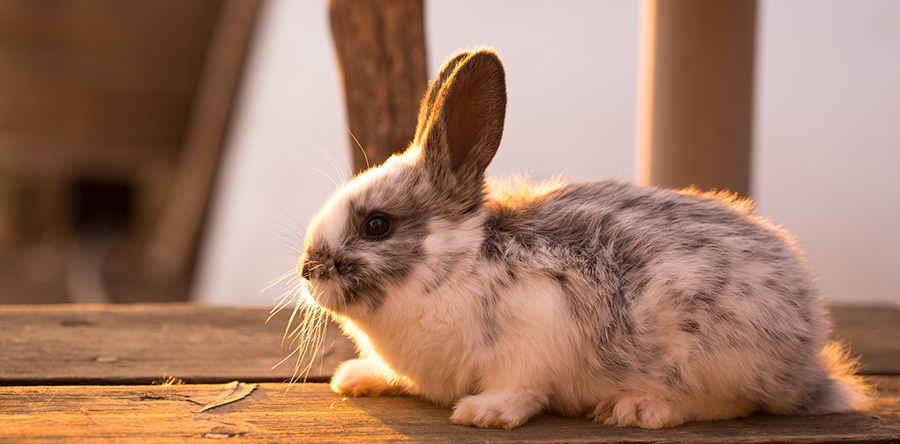
Nearly all cases of heatstroke in rabbits develop when they are trapped in a warm area and can’t cool down, for example:
- If their living space gets too warm.
- If they don’t have access to shade.
- If they get trapped in a greenhouse, shed, or hot room.
Rabbits are at particular risk of heatstroke because they have dense fur, and don’t pant or sweat. They lose body heat through their skin and ears, so it’s essential that they have access to cool, shady places to help them regulate their temperature (wild rabbits use burrows).
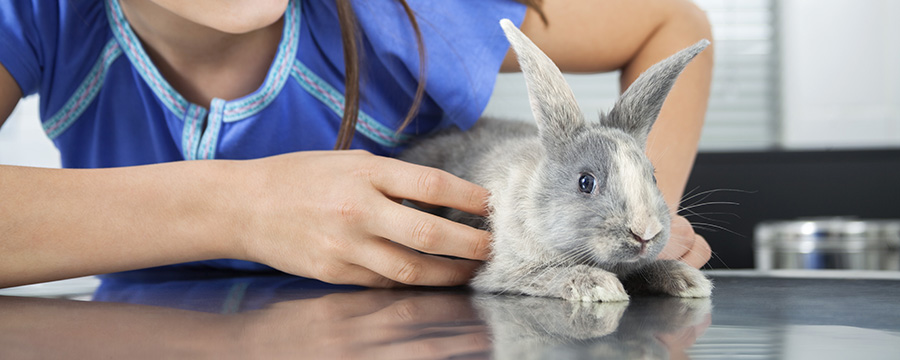
Cooling
Your vet will try to reduce your rabbit’s temperature as quickly as possible by using fans, cold water, and possibly a fluid drip. If they are extremely hot, struggling to breathe, having seizures, or unconscious, they may also need oxygen, medications, sedation, or to be put under general anaesthesia.
Medications and tests
Severe heatstroke can cause blood clotting problems, and damage the kidneys, brain, guts, heart, lungs, and nervous system. If your rabbit is showing signs of severe heatstroke, your vet may need to put them on a drip to support their organs, run some blood and urine tests, and give them medications to prevent any further damage. If this is the case, your rabbit may need to stay in the hospital for several days.
Nursing
Your rabbit will be monitored and nursed carefully, until they have stabilised. If they recover enough to be sent home, you will need to monitor them closely for 24-48 hours, and let your vet know if they stop eating, or deteriorate in any other way.
Check-ups
It’s likely that your rabbit will need to be re-checked a few days after they are discharged to make sure they are recovering well. If they are easily stressed, a phone/video check-up may be possible, but they’ll need to attend the clinic if your vet needs to run repeat blood and/or urine tests.
Outlook
The quicker your rabbit is cooled down, the better their chance of a full recovery. Unfortunately, unlike dogs and cats, rabbits tend to hide signs of being unwell for as long as possible, so very often, their condition is severe by the time heatstroke is noticed. If your rabbit has a mild case and they are cooled/treated quickly, they are likely to make a full recovery. Unfortunately, they are much less likely to recover if they have a severe case of heatstroke, have already developed organ damage, or their treatment is delayed.
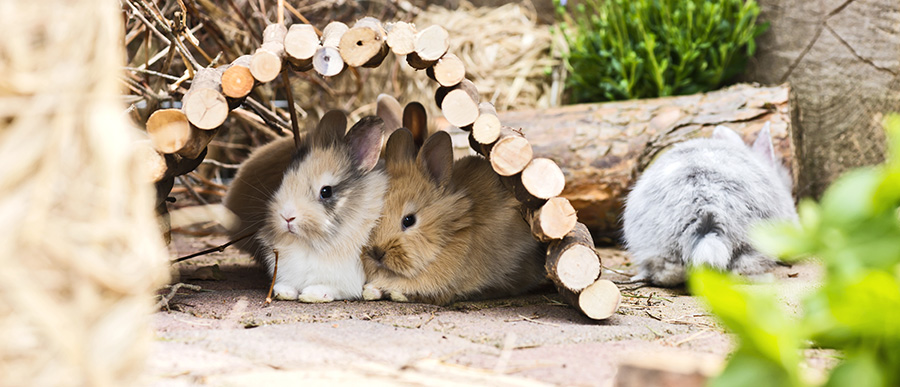
Wild rabbits keep themselves cool by spending the heat of the day in their burrows, only emerging in the mornings and evenings when it’s cooler. It’s important that you provide your pet rabbits with a similar environment so they can also keep themselves cool.
- Environment temperature of 18-20°C: Ideally your rabbits’ living space should stay between 18-20°C. If the air temperature is higher than this it’s important to provide them with a cool space that they can escape to. Another great way to help them stay cool is to freeze a bottle of water, wrap it in a cloth and pop it in with your rabbit so they can sit next to it to keep cool.
- Shade and ventilation: Make sure your rabbits’ living space and run has plenty of shade and ventilation. Shade should be created with natural materials such as branches, leaves, or wooden shelters. Try to avoid using plastic, as this is likely to trap heat.
- Water: Make sure your rabbits have fresh, cold water available to them at all times. They should have at least one water bowl or bottle each, and these should always be placed out of direct sunlight.
- Regular checks: Heatstroke can develop very rapidly, so it’s important to check your rabbits (and the temperature of their living space) regularly on warm days.
- Never leave them in a car on a warm day: Not even for a few minutes, with the windows open, or in the shade.
- Safe car travel: Car journeys can be very stressful for rabbits, so it’s best to avoid it as much as possible. If you need to make an essential trip, put them in a carrier with plenty of ventilation, keep the air-conditioning on, or open the windows, and check them regularly. Cooling mats can also be useful when travelling on warm days.
- Keep them a healthy weight: Overweight rabbits find it much more difficult to stay cool.
- Consider trimming their fur: If your rabbit is particularly long haired, it can help to trim their fur in the summer months. Brushing them regularly can also help to remove any excess fur.
Published: September 2023
Did you find this page useful?
Tell us more
Please note, our vets and nurses are unable to respond to questions via this form. If you are concerned about your pet’s health, please contact your vet directly.
Thank you for your feedback
Want to hear more about PDSA and get pet care tips from our vet experts?
Sign up to our e-newsletter
Written by vets and vet nurses. This advice is for UK pets only. Illustrations by Samantha Elmhurst.

